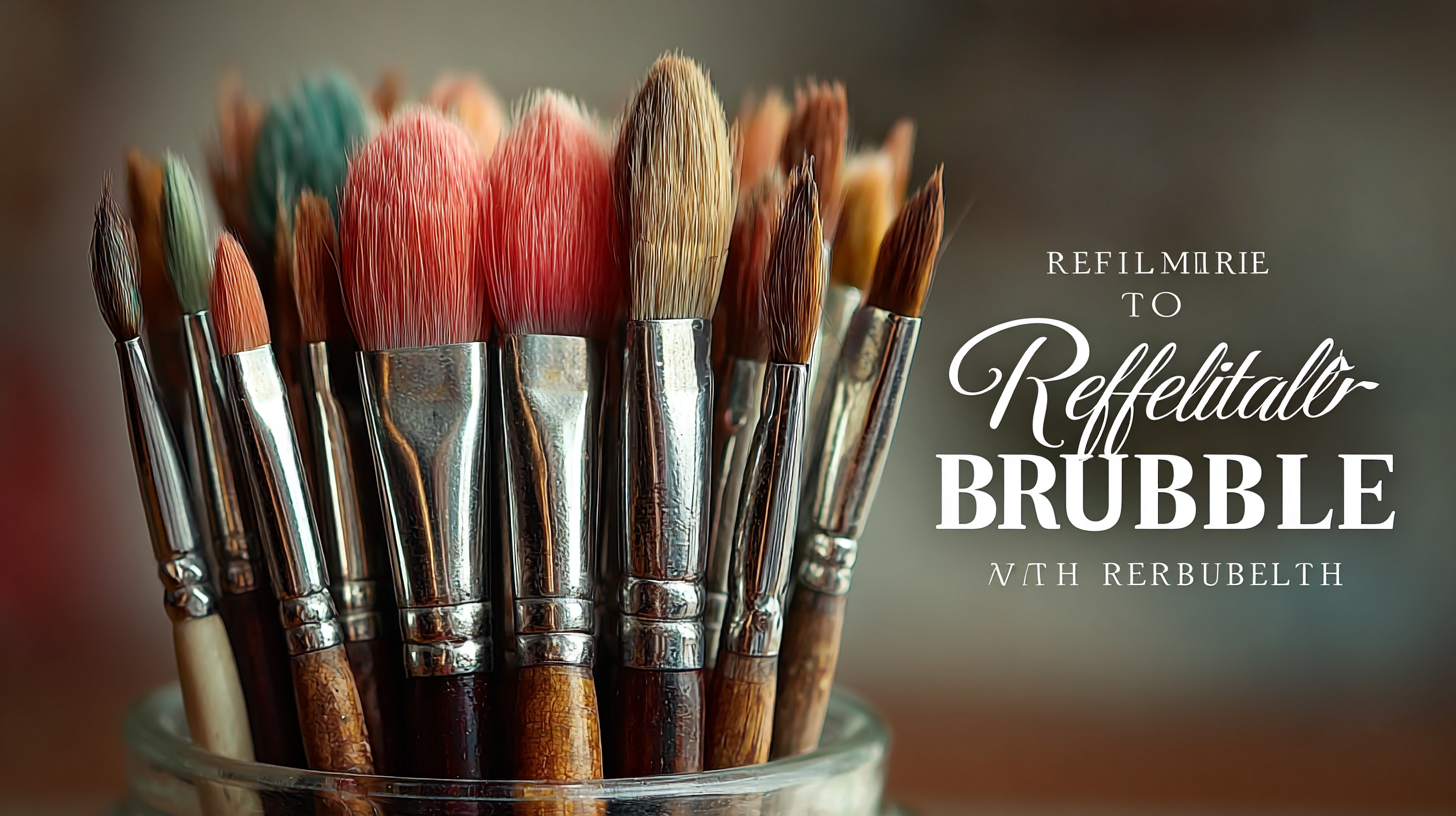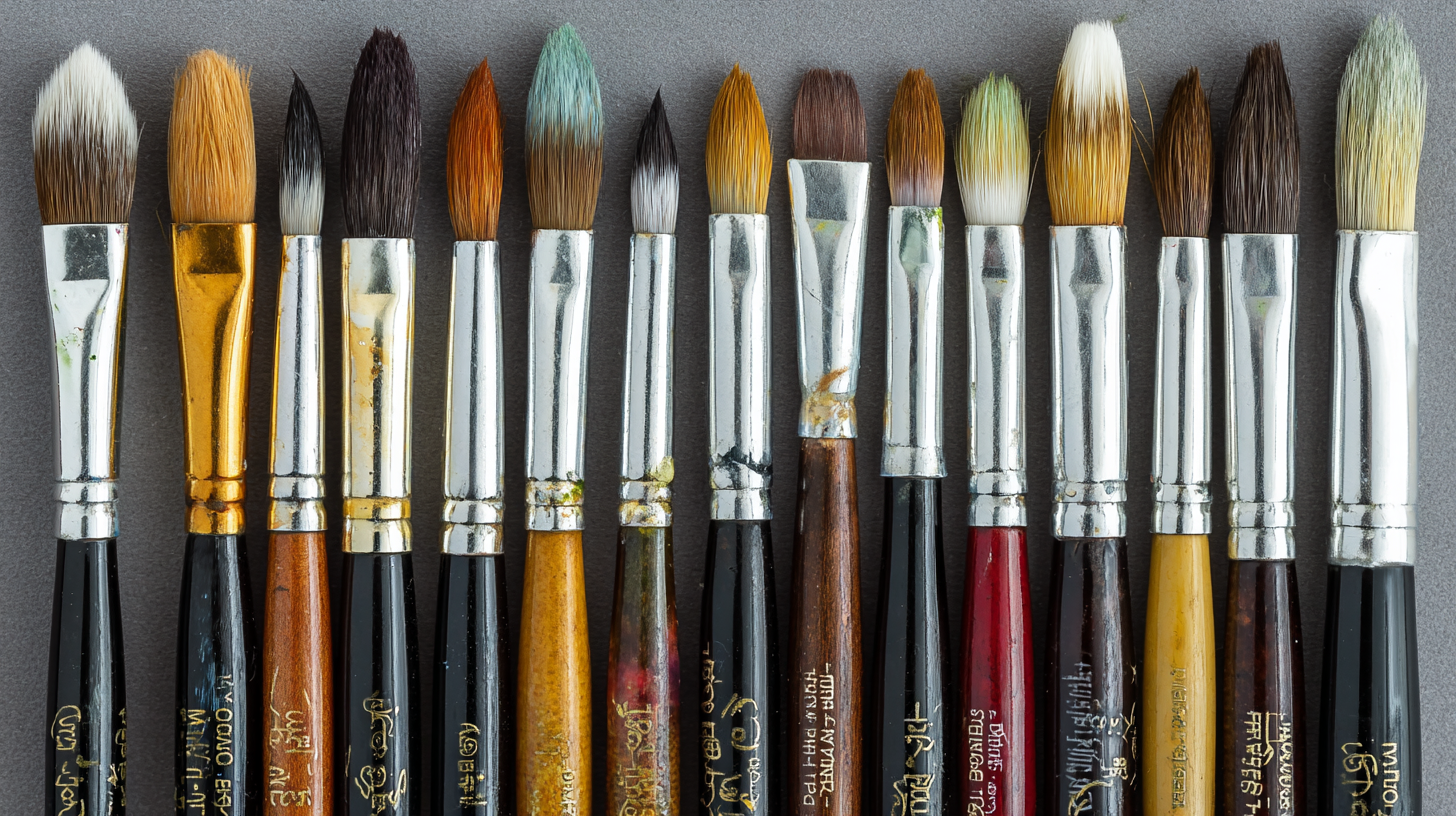In the vibrant world of watercolor painting, the choice of tools can significantly influence an artist's expression and creativity. Among these, the Refillable Watercolor Brush has gained popularity for its convenience and versatility. According to a recent market analysis by Research and Markets, the global art supplies market, which includes products like watercolor brushes, is projected to reach over $15 billion by 2025, reflecting a growing demand for quality art materials among both amateur and professional artists.

Choosing the right Refillable Watercolor Brush can enhance the painting experience, offering fluid control and easy refilling, making it an ideal choice for those seeking to blend artistry with practicality. In this ultimate guide, we will explore key factors to consider when selecting the best refillable watercolor brush, backed by expert insights and industry trends.
When selecting a refillable watercolor brush, understanding industry standards is crucial for artists aiming to achieve optimal results in their work. The production of watercolor brushes is guided by a variety of standards that dictate everything from the quality of materials used to the precision of the brush's craftsmanship. These guidelines ensure that brushes have the right balance of flexibility and firmness in their bristles, which is essential for achieving various techniques and finishes in watercolor painting.
Moreover, adherence to industry standards can significantly impact the longevity and performance of the brush. Brushes constructed according to these established norms are more likely to maintain their shape and effectiveness over time, regardless of the frequency of use. Artists can benefit immensely from choosing brushes that meet or exceed these standards, as they can trust the consistency and reliability of their tools. This not only enhances the creative process but also fosters a deeper connection between the artist and their materials, leading to more expressive and refined artwork.
When selecting a refillable watercolor brush, artists should consider several key features to ensure they have the best tools for their creative expression. First and foremost, the brush tip plays a crucial role in performance. Look for high-quality bristles that provide a fine point for detailed work and a broader surface for washes. Synthetic fibers are often preferred for their durability and ability to hold pigment effectively. Additionally, the brush should offer a snap-back quality, allowing for precise strokes that maintain their shape over time.
Another important aspect to consider is the reservoir capacity. A larger reservoir allows for extended painting sessions without constant refilling, making it ideal for on-the-go artists. Ensure the refill mechanism is easy to use; some brushes come with screw-on caps, while others might have squeeze mechanisms that release water directly into the bristles. Lastly, evaluate the weight and grip of the brush. A comfortable grip is essential for long painting sessions, and a lightweight design can enhance maneuverability, allowing for more fluid and expressive strokes. By focusing on these features, artists can select refillable watercolor brushes that enhance their artistic practice.

When choosing a refillable watercolor brush, the quality of materials used plays a crucial role in both performance and longevity, impacting the artist's ability to create vivid and lasting artworks. According to a study by the International Association of Arts Materials, brushes made with synthetic fibers can outperform natural bristles in terms of durability and water retention, particularly in humid conditions. While natural hair brushes, such as those made from sable, have historically been favored for their softness and ability to hold paint, synthetic options like nylon or polyester have advanced significantly. Reports indicate that high-quality synthetic brushes can provide similar flow control and paint distribution, making them a reliable choice for both professional and amateur artists.
Furthermore, the handle material can also affect the overall performance of the watercolor brush. Ergonomic designs made from high-grade wood or composite materials not only enhance comfort during prolonged use but also provide better control over delicate brushstrokes. The Creative Tools Institute notes that brushes with well-constructed handles reduce hand fatigue by up to 30%, allowing artists to focus more on their craft rather than the tool. Therefore, investing in brushes that prioritize material quality is essential for those looking to elevate their watercolor techniques and ensure their tools stand the test of time.
When it comes to selecting a refillable watercolor brush, artists have various options, each with its own set of pros and cons. One popular choice is the squeeze brush, where the reservoir is built into the handle. This type allows for easy control of water flow, making it ideal for on-the-go artists or those who enjoy plein air painting. However, it can sometimes be challenging to maintain a consistent water supply, leading to uneven application if not managed carefully.
Another option is the cartridge brush, which utilizes replaceable cartridges filled with watercolor. These brushes offer the advantage of being clean and convenient, as they eliminate the need for constant refilling from a water container. However, they can be more expensive in the long run, and finding compatible cartridges may pose a challenge.
Lastly, traditional refillable brushes with removable reservoirs provide versatility and are often favored for their ability to hold large amounts of water. While they offer more flexibility, they typically require more maintenance and can be less portable compared to other options. Each type of refillable watercolor brush has its distinctive qualities that cater to different artistic styles and preferences.
When it comes to selecting the best refillable watercolor brushes, understanding the nuances of price points across quality tiers is crucial for artists seeking to optimize their tools. According to market research reports, premium art supplies tend to retain their value and offer superior performance, leading to enhanced artistic expression. For instance, a recent analysis highlighted that artists willing to invest in high-quality tools typically experience 30% more satisfaction with their work, attributing this to better control and versatility provided by their equipment.

As consumers navigate their choices in art supplies, it is pertinent to recognize that the market dynamics mirror trends observed in other luxury sectors. For example, the luxury car market has shown similar growth patterns, where consumers are keen on investing in quality despite economic uncertainties. As reported, the luxury segment outperformed mass-market products by 25% in terms of sales growth in the past year. This trend indicates a shift towards valuing quality over quantity, a principle that can be directly applied to the selection of watercolor brushes. By understanding these market shifts, artists can make informed decisions that align with their creative needs and budgetary constraints.
